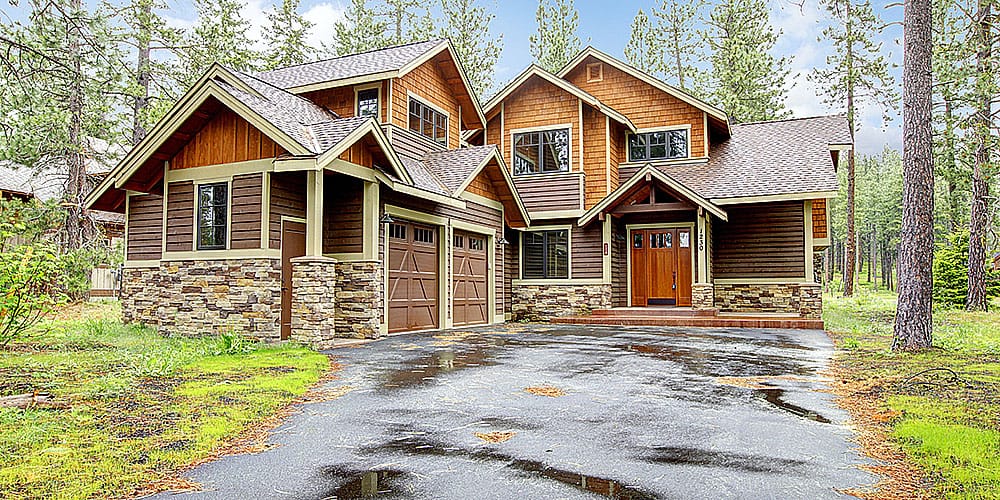Choosing the architectural style for your home is a significant decision that will shape its appearance, functionality, and overall feel. From classic to contemporary, there are numerous architectural styles to consider, each with its unique characteristics and appeal. Understanding these styles is crucial to ensure that your home reflects your taste, meets your needs and harmonizes with its surroundings. In this article, we’ll explore popular architectural styles, their defining features, and factors to consider when selecting home addition companies.
Defining Architectural Styles
Architectural styles encompass a wide range of designs that have evolved over time, influenced by culture, geography, and historical periods. Here are some of the most prominent architectural styles:
Colonial
Originating from the 17th century, Colonial architecture features symmetrical facades, gable roofs, and often incorporates elements such as columns and shutters. This style exudes timeless elegance and is prevalent in many historic neighborhoods across the United States.
Victorian
Victorian architecture emerged during the reign of Queen Victoria in the 19th century. It is characterized by elaborate ornamentation, steeply pitched roofs, bay windows, and intricate detailing. Victorian homes are known for their grandeur and eclectic mix of styles, including Gothic, Italianate, and Queen Anne.
Craftsman
Craftsman architecture emerged in the early 20th century as a reaction against the ornate Victorian style. It emphasizes simplicity, craftsmanship, and natural materials such as wood and stone. Craftsman homes typically feature low-pitched roofs, exposed rafters, and tapered columns, reflecting a focus on artisanal quality and functionality.
Modern
Modern architecture emerged in the early to mid-20th century and is characterized by clean lines, open floor plans, and a minimalist aesthetic. Influenced by the principles of the Bauhaus movement, modern homes prioritize function over ornamentation and often incorporate industrial materials such as steel and concrete.
Mediterraneantraditions
Mediterranean architecture draws inspiration from the coastal regions of Southern Europe, incorporating elements from Spanish, Italian, and Moorish design . Key features include stucco exteriors, red tile roofs, arched doorways, and wrought iron accents. Mediterranean homes often evoke a sense of warmth, relaxation, and Old World charm.
Choosing the Perfect Design
When selecting an architectural style for your home, it’s essential to consider several factors:
Location
Take cues from the surrounding environment and architectural context. Choose a style that complements the landscape, climate, and neighborhood character. For example, a modernist home may suit an urban setting, while a Craftsman bungalow may be more fitting for a suburban neighborhood.
Lifestyle
Consider your lifestyle and functional requirements. Do you prefer an open layout for entertaining, or do you value privacy and intimate spaces? Choose a design that aligns with your daily activities and enhances your quality of life.
Personal Taste
Your personal taste and aesthetic preferences should guide your decision. Explore different architectural styles, gather inspiration from magazines, websites, and architectural tours, and envision how each style resonates with your vision for your home.
Budget and Practicality
Evaluate the feasibility and cost implications of your chosen architectural style. Some styles may require higher maintenance or specialized construction techniques, leading to increased expenses. Determine a realistic budget and prioritize features that are essential to achieving your desired look and functionality and discuss it with your home addition contractors McLean.
Architectural Strategies for Brighter, Healthier Spaces
Natural light plays a crucial role in shaping the ambiance and functionality of indoor spaces. Beyond illuminating rooms, sunlight has numerous benefits, including boosting mood, enhancing productivity, and reducing energy consumption.
Understanding the Importance of Natural Light
Natural light not only illuminates our surroundings but also affects our physiological and psychological well-being. Exposure to sunlight helps regulate our circadian rhythms, promoting better sleep patterns and mood stability. Additionally, natural light provides essential vitamin D, strengthens our immune system, and improves overall cognitive function.
Orientation and Site Planning
Optimal site orientation is critical for maximizing natural light penetration into the house. Orienting living spaces towards the south or southeast allows for maximum exposure to sunlight throughout the day, particularly during the morning hours. Designing outdoor spaces such as patios and courtyards to capture sunlight while providing shade during peak hours can further enhance natural light penetration.
Window Placement and Size
Strategic placement and sizing of windows are essential for optimizing natural light intake. Consider incorporating large, expansive windows on south-facing walls to capture ample sunlight throughout the day. Additionally, placing windows high on walls or incorporating clerestory windows allows for indirect sunlight to penetrate deeper into interior spaces while maintaining privacy.
Skylights and Light Tubes
Skylights and light tubes are effective architectural features for introducing natural light into interior spaces, especially in areas with limited access to exterior walls. Skylights installed in central areas such as stairwells, bathrooms, and hallways can channel sunlight into deeper parts of the home, reducing the need for artificial lighting during daylight hours. Light tubes, also known as solar tubes or sun tunnels, are cylindrical tubes installed between the roof and ceiling, capturing and diffusing sunlight into interior rooms.
Interior Layout and Open Floor Plans
An open floor plan layout promotes natural light diffusion and circulation throughout the home. Minimizing interior partitions and walls allows sunlight to penetrate deeper into living spaces, creating a seamless connection between indoor and outdoor environments. Consider incorporating light-transmitting materials such as glass partitions or interior windows to maintain visual connections while maximizing natural light distribution.
Reflective Surfaces and Light Colors
Incorporating reflective surfaces and light-colored finishes can amplify natural light within interior spaces. Choose light-colored walls, ceilings, and flooring materials to bounce and diffuse sunlight, creating a brighter and more expansive feel. Mirrors strategically placed opposite windows can also reflect and amplify natural light, enhancing the overall luminosity of the room.
Conclusion
Choosing the perfect architectural style for your home is an exciting journey that involves careful consideration of various factors. Whether you’re drawn to the timeless elegance of Colonial architecture, the eclectic charm of Victorian homes, or the sleek simplicity of modern design, there’s a style to suit every taste and lifestyle. By understanding the defining features of different architectural styles and assessing your preferences, needs, and budget, you can create a home that reflects your personality, enhances your everyday life, and stands the test of time.
Furthermore, maximizing natural light in architectural design not only enhances the visual appeal of homes but also promotes health, well-being, and sustainability. By implementing thoughtful strategies such as optimal orientation, strategic window placement, skylights, open floor plans, and light-reflective surfaces, homeowners can create brighter, healthier spaces that foster comfort, productivity, and connection to the natural environment. Embracing natural light in your condo remodel DC as a design principle not only reduces energy consumption but also enriches the living experience, transforming houses into havens of light, warmth, and vitality.


